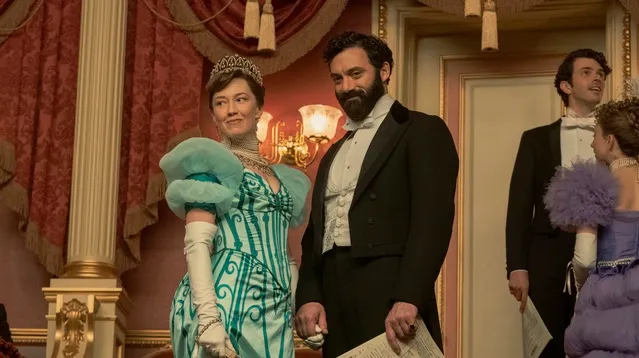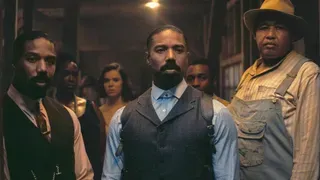March 27, 2013
Remembering Lorraine Hansberry
Kay Bourne READ TIME: 5 MIN.
There was one production of "A Raisin in the Sun" that upsets Joi Gresham to this day.
Try as she might, she had no impact on the made for television version that starred Sean Combs (aka P. Diddy). The shame of it is that she really enjoyed the 2004 Broadway revival staging and the transfer to the little screen kept all the same actors (which also included Phylicia Rashad and Audra McDonald in Tony winning performances) and director (Kenny Leon).
By the way, she estimates she's seen some 50 productions of the classic drama to date.
A happier experience is the Huntington Theatre Company's current staging directed by Liesl Tommy, which continues through April 7.
With Leroy McClain, Kimberly Scott, and Keona Welch, the 1959 Broadway drama, set in a cramped tenement apartment on Chicago's Southside in the 1950s, tells the story of an African American family whose individual dreams of a better way of life conflict when a sizeable insurance payment means they have some choices they didn't have before.
A happier experience
Gresham, a dancer/choreographer, is the literary trustee of the Lorraine Hansberry estate, which means she controls the rights a theater producer needs to put the play on.
She grew up in the house in Croton-on-Hudson, New York that Hansberry and Robert Nemiroff shared when they were married. The couple was married in 1953; and though they divorced in 1962, they remained close up until her death from pancreatic cancer in 1965 at the age of 34. Hansberry left the residence to Nemiroff in her will.
"Lorraine loved that house," commented Gresham who spoke to EDGE in a conversation in her Cambridge apartment, decorated with art work that was beloved by Hansberry. (A tour of the Croton-on-Hudson house is available on YouTube dating from when Gresham put it up for sale.)
"She bought the house in 1961 with the proceeds from the movie made of 'Raisin in The Sun' with Sidney Poitier as Walter Younger. She wrote much of 'The Sign in Sidney Brustein's Window' there. She was always writing." (That play, Hansberry's second produced play, ran on Broadway for 101 performances in 1965, closing on the same night that she died.)
A cut scene
With that Hollywood deal, however, lies the rub.
Hansberry put her estate, including her unpublished works, in Nemiroff's hands. After his death in 1991, that legacy was left to Nemiroff's second wife, Jewell Handy Gresham, who was Gresham's mother. She was in charge of the trust when the television version was being made, but she wasn't well, says Gresham. So it came to Joi to try to intervene in some script changes she disliked.
Gresham notes that "the producers, Craig Zadan and Neil Meron (with Sean Combs) "are top shelf Hollywood producers (Storyline Entertainment) who've done movies like 'Chicago' and 'Hairspray,' and they really were coming to my mother as a courtesy call because she didn't own the movie rights, they'd been sold to Columbia Pictures which is a bit unfortunate for us."
Even so, when Joi learned that among other cuts a scene she feels is pivotal to the story Hansberry meant to tell had been left out of the television adaptation (by Paris Quarles), "I contacted the producers and said I'm coming to the set."
The deleted scene is the beginning of Act II when Beneatha, dressed in the Nigerian clothes a boyfriend at her college has bought her, dances around the living room to a drum beat she hears in her head. Her sister-in-law stands by dismayed. At this point Walter Lee, Beneatha's brother comes home drunk and seeing Beneatha dancing around, acts out some made up tribal ritual which concludes with him leaping onto a table and pronouncing himself 'Flaming Spear.'
"I always look forward to that scene," said Gresham, "even when I don't like the production.
"It's the last time (the brother and sister enjoy one another) before they become so at odds. It's jubilant.
"You feel the love they have for each other. It's a very important scene. Through laughter they connect and they connect with the audience," she said. "That they'd taken this scene out was appalling and I think it wouldn't have happened had my mother been well and on top of things."
An advocate for social justice
There were some major pluses to the airing of that movie, however, she adds. As with the Broadway show, it introduced even more people especially younger generations to Lorraine's play.
"It also meant," says Gresham, "that the public saw the film and went right back to the Sidney Poitier version. Sales of that 1961 movie went through the roof."
Whatever the level of production of "A Raisin in the Sun" from high school stages to community theater and large professional ones such as at the Huntington, Lorraine Hanberry's passion for equity and social justice is never drowned out.
Gresham believes that gay rights would be among her causes in this day and age.
"Lorraine was raised to have a global recognition of the civil rights and social justice movements," says Gresham.
"She grew up in a home where there was national and international exposure to these issues and I'm sure there was lengthy discussion. The leading cultural figures, artists and intellectuals of her time came as visitors to her parent's home (in Chicago).
"Later on as a journalist she covered these movements," continues Gresham, "as an activist she participated in these political actions and demonstrations; as an artist, these issues laid the foundation for her plays.
"I have no doubt that, had she lived, she would have recognized the gay liberation movement as a central civil rights and social justice movement," Gresham said.







